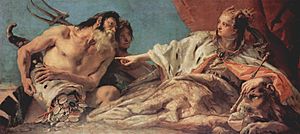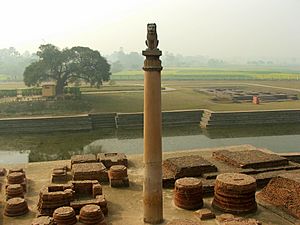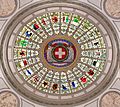Republic facts for kids

A republic is a type of government where there is no king, queen, or other monarch. Instead, the people are in charge. This means that citizens can choose their leaders. These leaders then represent them and help make the laws.
The word "republic" comes from the Latin words res publica. This means "public thing" or "belonging to the people". In a republic, laws are made and carried out in the name of the people. The United States of America is a well-known republic today.
Contents
What Makes a Republic Different?
In a republic, people do not need permission from a king or queen to choose their leaders. They also don't need permission to decide what kind of government they want. This is different from a constitutional monarchy. In a constitutional monarchy, a country has a king or queen, but also free elections. The United Kingdom is an example of a constitutional monarchy.
The Head of State
In most republics, the main leader is called the president. This person is usually chosen by the citizens. They might be elected directly by everyone, or by a group of elected representatives. The president acts as the top representative for the people.
Sometimes, a president has a lot of political power. In other countries, the president might not have much direct power. But they are still important in the country's legal system.
Early Republics in History
The first known republic was Licchavi in India. This happened around 600 to 500 BCE. Other very early republics were Greek settlements near the Mediterranean Sea.
What made these early republics special was how they chose their leaders. People could vote for who they wanted to lead them. The votes were counted, and the person with the most votes won. This was a big change from other city-states at the time, which often had kings or rulers who were not chosen by the people.
Images for kids
-
The Mahajanapadas were powerful kingdoms and republics in Ancient India. The Shakyas, Koliyas, Mallakas, and Licchavis were some of the republics.
-
Giovanni Battista Tiepolo, Neptune offers the wealth of the sea to Venice, 1748–1750. This painting shows the power of the Republic of Venice.
-
Beginning of the Republic of Metz. Election of the first Head-Alderman in 1289, by Auguste Migette. Metz was a free city in the Holy Roman Emperor's lands.
-
A 1920s poster for the Republic of China. It shows President Yuan Shikai and provisional President Sun Yat-sen.
-
The Swiss regions (cantons) shown on the dome of the Federal Palace.
-
The flag of California, a state in the US.
See also
 In Spanish: República para niños
In Spanish: República para niños








